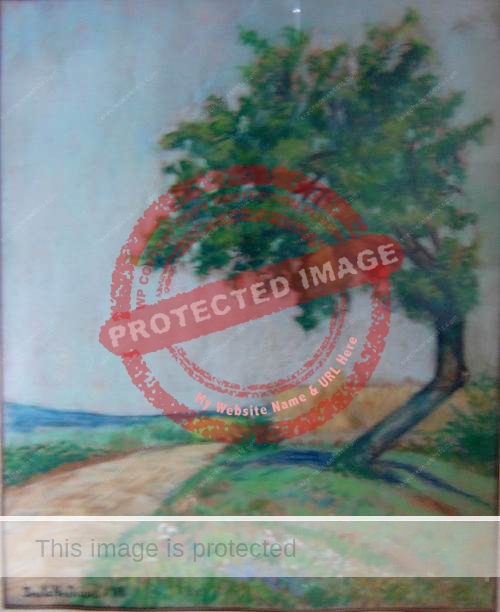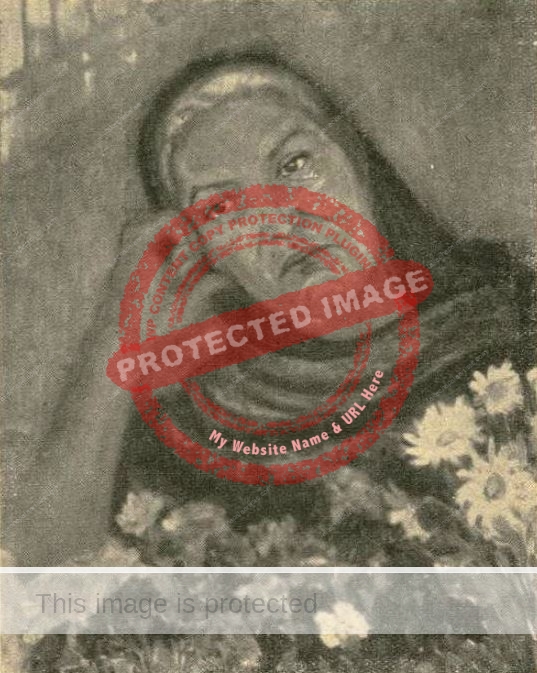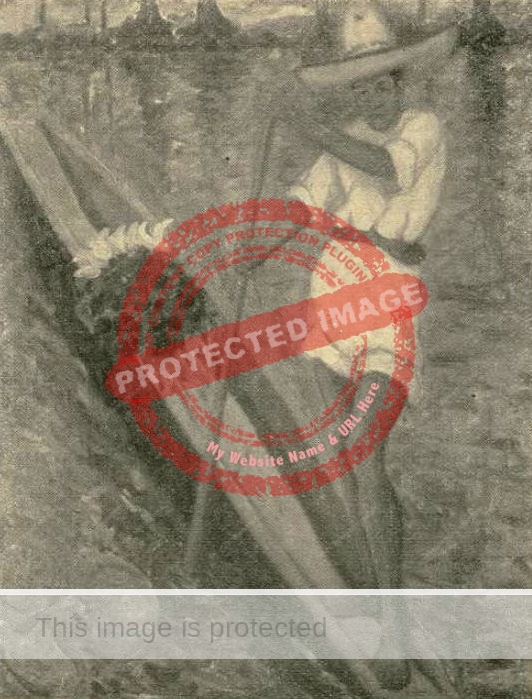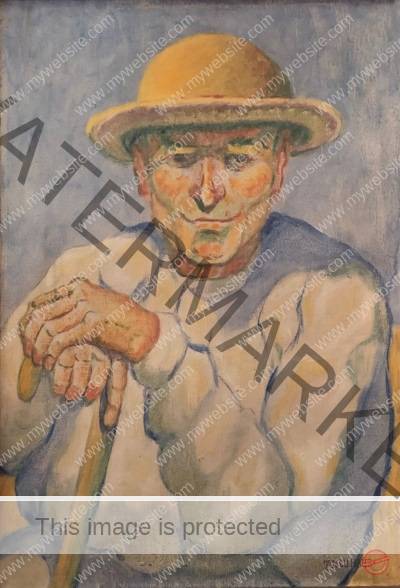In researching the artists and authors associated with Lake Chapala, I now have a long list of enigmatic references to lesser known artists, whose life and work remain very much a mystery.
One of the more intriguing is a “Miss Trude Neuhaus,” a German artist, who, according to the New York Times of 1 Nov 1925, brought “an exhibition of paintings, water colors and drawings of Mexican types and scenery” to the Anderson Galleries in New York. The show at the Anderson Galleries ran from 3-14 November 1925. The pieces had previously been exhibited at the National Art Gallery in Mexico City, and the exhibition also included “Aztec figurines and pottery recently excavated by the artist in Chapala, Mexico”. (Note that collecting ancient artifacts as souvenirs and removing them from the country was a common practice at the time, albeit one that is now subject to legal provisions and generally frowned upon.)
The only background offered about Miss Neuhaus is that she had “studied under Burmester in Munich” (possibly Georg Burmester, 1864–1936) and was a portrait painter in Germany. According to the short piece in the New York Times, she planned to return to Germany “after exhibiting her work in the large cities of the United States”, in order “to make several portraits, for which she has commissions.”
This Trude Neuhaus painting dates from 1919, before she visited Mexico.

Trude Neuhaus. 1919. Untitled, Credit: Willem Eppink.
A few more details have surfaced over the past few years about Trude Neuhaus, but none that explains why she visited Chapala.
According to U.S. immigration records, Neuhaus was born in early 1899 in Gottingen, Germany, and was 26 years and 7 months of age when she entered the U.S. for the exhibition in New York. The exhibit followed a stay of 14 months in Mexico from summer 1924 to September 1925, which means she was in Chapala shortly after D. H. Lawrence was there, and at exactly the same time as artist Everett Gee Jackson was living in the lakeside village.

Trude Neuhaus. c. 1925 “Florista Mexicana.”
No details have yet emerged of her exhibition at the National Art Gallery in Mexico City. However, after New York, “the young and already renowned artist” returned to Germany and showed her drawings, paintings and collection of artifacts at the Kunstgewerbemuseum (Museum of Decorative Arts) in Berlin in February 1925. A reviewer of the show described Miss Neuhaus as “an enthusiastic admirer” of Mexico, who “has dedicated her brush to reproducing popular types and customs of that country,” ranging from beggars and young people on the street to “a little Indian girl with a sad expression,” potters in their workshops and florists from Xochimilco.

Trude Neuhaus. c. 1925 “Remero de Xochimilco.”
The watercolors in the show that attracted attention included paintings of “the picturesque streets of Aguascalientes and Zacatlán and a sunset by the sea.” The mention of Zacatlán (in the state of Puebla), which is rarely visited even today by tourists, is especially interesting and suggests that Trude Neuhaus was a very adventurous young lady.
In addition to her artwork, the Berlin exhibit included the objects Neuhaus had found at Chapala and elsewhere as well as “some samples of the artistic industries that currently exist in Mexico, such as yarns, fabrics and ceramics made by Galán [sic], the famous potter from Tlaquepaque.” This is likely to refer to Armando Galván Rodríguez, born in 1898, who was recognized as a preeminent potter in Tonalá.
The artist was accompanied by her mother, Toni Neuhaus, to the opening of the show, which attracted numerous German and Mexican dignitaries.
Only one month after the show in Berlin, Trude Neuhaus was on her way back to Mexico, this time as a married woman, the wife of Rudolf (Rodolfo) May. May was born on 17 June 1894 in Nuremberg, Germany, and served in a Germany artillery unit during the first world war. By the mid-1920s, he was living in Mexico City. While May was not in New York at the time of Neuhaus’ show there, he passed through the city en route to Germany at the end of November 1925.

Trude Neuhaus. Untitled, undated portrait. Collection of Rodolfo May (see comments).
In March 1926, the newly married couple returned to Mexico from Hamburg on board the SS Rio Bravo. The ship’s manifest lists them as Rudolf May, a merchant aged 32, and Trude May, aged 30. (Trude would actually have been 27 years old according to the US immigration document referred to earlier.)
A decade later, “Trude Neuhaus-May” was the co-applicant with Angel M. Diez for a patent and trade-mark for a “mechanism for veering the headlamps of automobiles”. This patent was granted in Mexico in 1936 and in the U.S. two years later.
Both Rodolfo and Trude became naturalized Mexican citizens at some point prior to when Rodolfo visited Germany for several weeks in 1937-1938. Rodolfo (unaccompanied by his wife) entered the U.S. on his way to Europe on 23 November 1937 and landed at New York on his return on 4 February 1938.
In May 1955, and again in May 1959, Rodolfo and Trude took an Air France flight from Mexico City to New York; it is unclear if New York was their final destination or whether they were in transit to Europe. These flights list the address of their Mexico City residence as Amores #211 (Colonia del Valle).
Rodolfo died in Mexico City in March 1961 and Trude died there seven months later.
Trude and Rodolfo had three children: Beatriz, Rodolfo (1929-1996) and Luis (c 1932-1965).
Among the many questions still unanswered is whether or not Trude Neuhaus continued to exhibit her work after she married and returned to live in Mexico—the only known exhibits by this artist date back to 1925 and 1926.
The only auction record for Trude Neuhaus is for a painting entitled “Indian mother and child” (date unknown) which sold in the U.S. in 1984 for $500.
Can anyone help fill in some of the blanks about this “mystery artist”? If so, please get in touch!
Sources
- Luis Kabikef. 1926. “Exposición de cuadros.” Berliner Tageblatt, Año 4, #2 (February 1926), 8.
- New York Times. 1925. “Miss Neuhaus shows paintings.” New York Times, 1 Nov 1925, W20.
Acknowledgment
- My sincere thanks to Willem Eppink (see comments) for allowing me the use of a photo of a Trude Neuhaus painting in his possession, and to Rodolfo May (see comments) for sharing information about his grandmother and for his permission to reproduce one of her later works.
Note: This post is an extended version of a post first published 13 December 2015.
Other mysteries relating to Lake Chapala authors and artists:
- Who is the artist of this silkscreen?
- Who painted these works from 1949/1950?
- How long was muralist Marion Greenwood (1909-1970) in Chapala?
- Who was Lilian Bruner?
- Does anyone know the whereabouts of this Sylvia Fein painting?
- George Ballou and a lost 500-page book about the artist-tourist colony at Lake Chapala
- John Thompson, the mystery Miro-style painter who lived in Jocotepec in the 1960s
Comments, corrections or additional material related to any of the writers and artists featured in our series of mini-bios are welcome. Please email us or use the comments feature at the bottom of individual posts.
Tony Burton’s books include “Lake Chapala: A Postcard History” (2022), “Foreign Footprints in Ajijic” (2022), “If Walls Could Talk: Chapala’s historic buildings and their former occupants” (2020), (available in translation as “Si Las Paredes Hablaran”), “Mexican Kaleidoscope” (2016), and “Lake Chapala Through the Ages” (2008).
I have an older painting, signed Trude Neuhaus, and it shows a tree in a landscape. If you are interested, please email me.
Thanks, Willem; I have emailed you.
Buenos dìas;
Trude Neuhouse; fue mi abuela, gran artista plàstica, casada con Rodolfo May y tuvo 3 hijos, Rodolfo, Luis y Beatriz, esta ùltima sobrevive y vive en la Ciudad de Mèxico, todos en casa tenemos pinturas y arte hecho por mi abuela. estoy a sus òrdenes. Gracias por reconocer a esta gran artista que amaba a Mèxico con una pasiòn sin limites.
¡Que interesante! Gracias por contactarme. Me encantaría ver fotos de algunos de sus cuadros y saber más sobre su visita o visitas al lago de Chapala. ¿Sería tan amable de enviarme un correo electrónico? Aquí esta mi correo electrónico. Un saludo, Tony Burton.